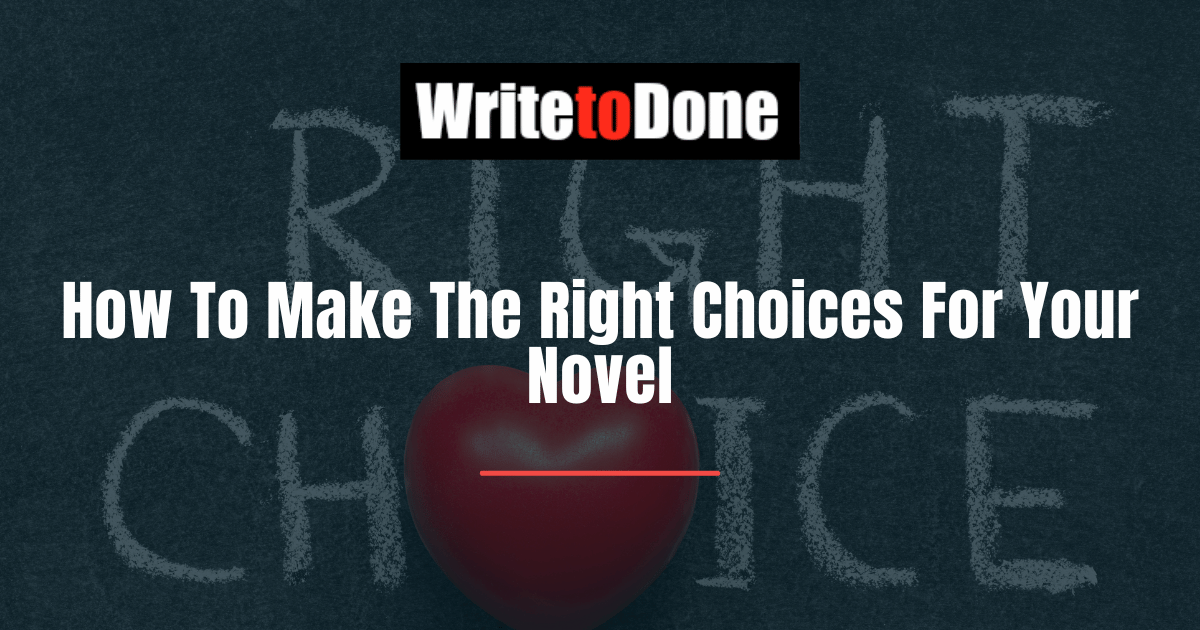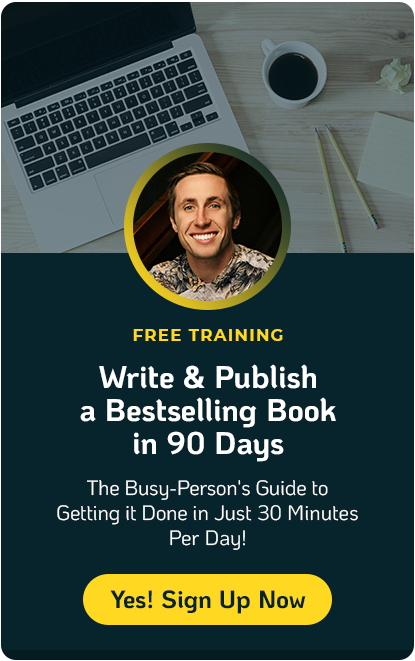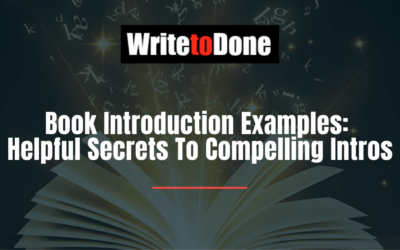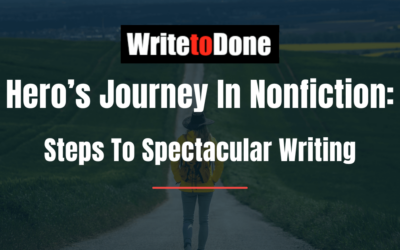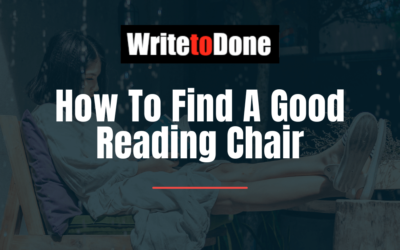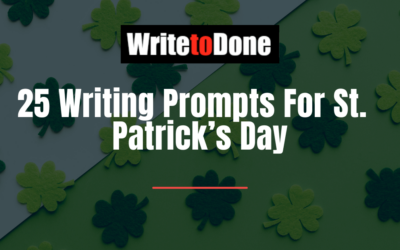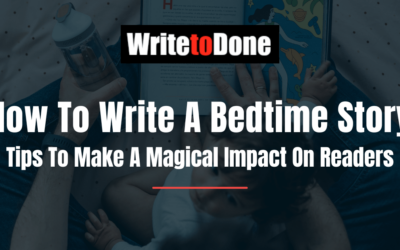How do you know which choices are right for your novel?
When you first start typing words onto the blank computer screen, you won’t always have a clear vision of the story you’re about to write.
Your story could end up playing out in any number of ways, much like life itself.
The decisions you make when beginning your novel could easily turn out to be the wrong decisions.
The great thing about writing a book is that after finishing the first draft, you can always go back and correct all the mistakes. You’re at liberty to change your mind about almost any decision you might have made.
The not-so-great thing about writing a book is that when it turns out you’ve made a few wrong decisions in the beginning, the work required to correct those mistakes can be overwhelming.
That’s why it’s so important to identify the choices that will shape your stories—and to make the right decisions before you put words on the page.
Consider five decisions that will dramatically affect the course of your first draft. Some of them will be specific to your story. But others apply to every novel.
#1. Which Point of View Should You Use?
Point of view (POV) is the perspective through which the narrative is filtered. You can tell your story in one of three different POVs:
First-Person: “I was a curious child: quick with questions and eager to learn. With acrobats and actors as my teachers, it is little wonder that I never grew to dread lessons as most children do.” – The Name of the Wind by Patrick Rothfuss
Third-Person: In London, Nadine Waveney, startled from dull pre-dawn somnolence at the night desk, heard the distance-shrouded crumps and thought, for a stark, confused moment, Is it here? Zeppelins? — My Dear, I Wanted to Tell You by Louisa Young
Second-Person: You are at the wheel of your car, waiting at a traffic light. You take the book out of the bag, rip off the transparent wrapping, start reading the first lines. A storm of honking breaks over you; the light is green, you’re blocking traffic. — If on a Winter’s Night a Traveler by Italo Calvino
Each POV will create an entirely different feel for your story. The intimacy of first-person, the practicality of third, and the eccentricity of second lend themselves to three very different types of story.
Which is right for your story?
Consider the pros and cons of each. Do you want to tell the story from the perspective of just one person? Does that person have a strong and interesting voice? If so, first-person may be the right choice.
But if you want to use more than one narrator or to allow a little more distance between your protagonist and your readers, you’re probably better off with third-person.
Second-person, an always tricky and usually unpopular choice, should be generally avoided.
#2. Whose POV(s) Will Your Novel Present?
Most stories will be confined to the specific perspectives of certain characters. Which POVs should your story include?
The protagonist’s: as in Susanne Collins’ The Hunger Games.
The protagonist’s and the antagonist’s: as in The Winner by David Baldacci.
The love interest’s: as in Perdido Street Station by China Miéville.
The sidekick’s: as in The Guernsey Literary and Potato Peel Pie Society by Mary Ann Shaffer and Annie Barrows.
The antagonist’s sidekick’s: as in Brent Weeks’ The Way of Shadows.
How many are too many?
Which is right for your story?
A general rule of thumb when choosing POVs is: less is more.
The fewer POVs you have, the tighter your narrative will be.
Consider your story:
- What important moments in the plot will your protagonist not be present for?
- Do you need to dramatize these scenes?
- If so, is there another character who could be a narrator?
- Is this character important to the story?
- Can you sow his POV throughout the book, so that his perspective matters to the story as a whole, and isn’t just a choice made for your convenience, at the risk of jarring readers?
- Which characters have the strongest character arcs?
#3. Which Tense Should You Write In?
For centuries, past tense has been the standard for written fiction, but present tense has gained a certain trendiness in recent years.
Past Tense: They filed clumsily into the battleroom, like children in a swimming pool for the first time, clinging to the handholds along the side. Null gravity was frightening, disorienting; they soon found that things went better if they didn’t use their feet at all. —Ender’s Game by Orson Scott Card
Present Tense: I turn to look at Clare and just for a moment I forget that she is young, and that this is long ago; I see Clare, my wife, superimposed on the face of this young girl, and I don’t know what to say to this Clare who is old and young and different from other girls, who knows that different might be hard. — The Time Traveler’s Wife by Audrey Niffenegger
Your choice of tense will affect every sentence of your story.
Past tense brings both flexibility and solidity – most readers don’t even think about tense when reading it.
Present tense has the ability to create both intimacy and distance, depending on how it’s used, while also lending speed, immediacy, and lyricism.
Which is right for your story?
Try writing a few paragraphs in both tenses.
Which tense comes more naturally to you? Which feels more appropriate for your story?
Some readers dislike reading the present tense. Are you willing to risk their dislike solely on account of the tense you use? What would present tense bring to your book that past tense can’t?
#4. How Long Should Your Book Be?
Here’s another decision that may be difficult to make beforehand, but which is absolutely worth thinking about.
Although it’s often best to allow the story itself to determine its length, authors can’t afford to overlook genre guidelines for word count.
If you can determine upfront how long you’d like your book to be, you can use a knowledge of story structure to approximate how long each section of your story needs to be — and to then keep track of your progress as you’re writing the first draft.
Which is right for your story?
What genre are you writing?
- If you’re writing middle grade or young adult fiction, you’ll want to keep your book under 80,000 words.
- Romance novels usually range from 55,000 to 100,000 words, depending on sub-genre.
- Mysteries and thrillers should try to stay under 100,000 words.
- Science fiction and fantasy novels usually range between 90,000 and 120,000 words.
#5. How Long Should Your Scenes and Chapters Be?
Unlike previous decisions, this one is more flexible, since changing scene and chapter lengths can sometimes be as easy as moving the chapter headings and scene break markers.
But it’s still an important decision to keep in mind in the early stages, since scene and chapter length dramatically affect tone and pacing.
Longer scenes and chapters will create a sense of leisure and gravitas, as in Patrick O’Brian’s Aubrey-Maturin series.
Shorter scenes and chapters lend urgency and are often more effective at keeping readers turning the pages into the wee hours, as in Ruth Downie’s Gaius Petreius Ruso series.
Which is right for your story?
- What type of story are you writing—a quiet, generational exploration of human nature, or an adrenaline-laced race against the clock?
- What’s your protagonist’s personality—introspective and mellow, or fast-talking and action-oriented?
Match your story’s pacing to its tone by controlling the length of your scenes and chapters.
Before you turn yourself loose on the page, take a few moments to consider the ramifications of these five choices.
Once you know how to make the right choices for your novel, your first draft will be an enormous improvement over earlier first drafts. Making the right call now can save you hundreds of hours of work later.
What decisions do you try to make before starting your book? Have you ever made the wrong decision and realized it too late? Let me know in the comments below!

